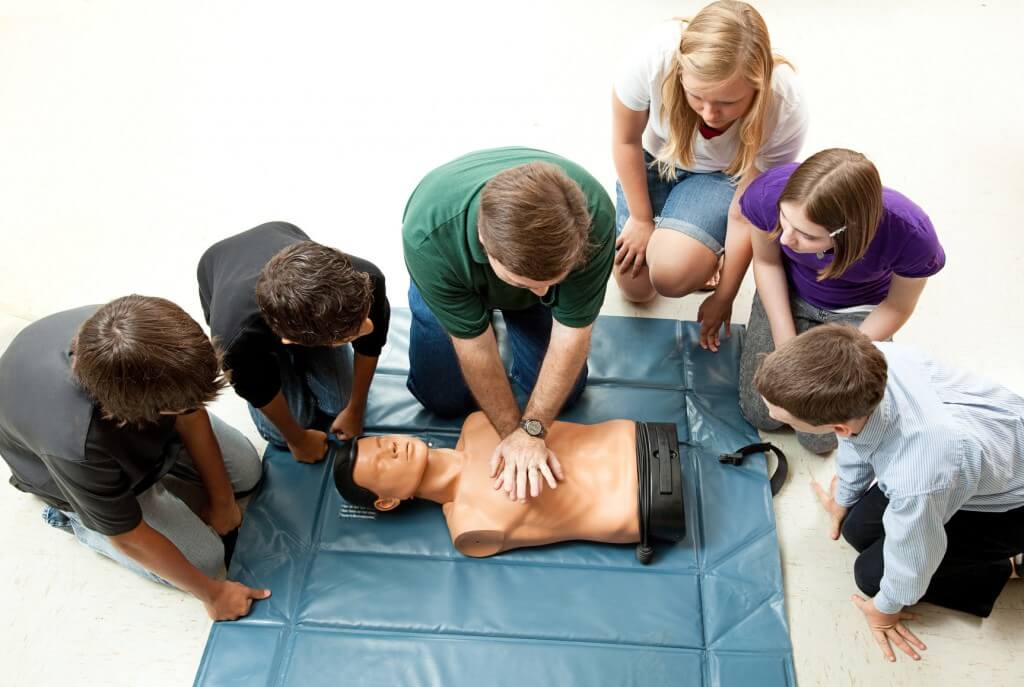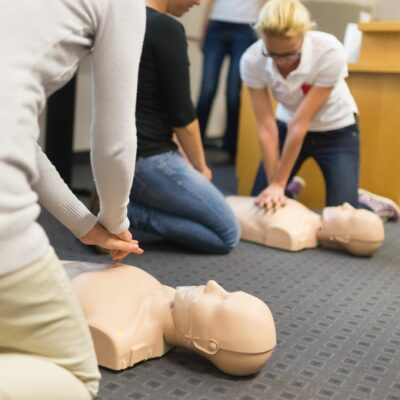Introduction
In today's unpredictable world, understanding exactly how to react throughout emergencies can make the distinction in between life and fatality. Whether it's an abrupt clinical incident, a mishap at home, or a health and wellness dilemma in a public room, having the right abilities can save lives. Go Into Emergency Treatment and CPR training courses-- your essential toolkit for emergency situations. These programs equip people with the knowledge and methods needed to manage various circumstances successfully.
This extensive guide will certainly delve into every little thing you require to understand about Emergency treatment and CPR training courses, covering their significance, what they involve, exactly how to get accredited, and a lot more. So bend up; we're about to embark on an insightful journey that could prepare you for real-life emergencies.
What Are Very first Help and Mouth-to-mouth Resuscitation Courses?
First Help and mouth-to-mouth resuscitation courses provide vital training on how to react to medical emergency situations successfully.
Understanding Initial Aid
- Definition: First aid is the prompt aid offered to a person struggling with an ailment or injury up until professional medical assistance arrives. Key Components: It consists of assessment of the scenario, stablizing of the client's condition, and performing essential interventions.
Importance of CPR (Cardiopulmonary Resuscitation)
- Definition: Cardiopulmonary Resuscitation (CPR) is a lifesaving strategy utilized in emergencies when somebody's heartbeat or breathing has stopped. When It's Needed: Instances consist of heart attack or near-drowning incidents.
These courses incorporate practical skills with theoretical knowledge, guaranteeing participants not only understand what to do however additionally why those actions are essential.

Why Ought to You Enroll in a First Aid Course?
Real-Life Application of Skills
The main factor anyone check here ought to consider enrolling in a first aid course is the potential real-life application of these abilities. Visualize observing someone collapse due to a cardiac arrest; understanding just how to execute mouth-to-mouth resuscitation might be life-saving.
Boosting Confidence in Emergencies
Taking component in these programs assists develop self-confidence. When faced with an emergency scenario, having undergone correct training can alleviate panic and improve decision-making.

Increased Employability
Many employers now seek prospects who have an emergency treatment certification. Whether you're in health care, education, or perhaps corporate industries, having this qualification can provide you an edge over other applicants.
Components of First Aid and CPR Courses
Basic Life Support (BLS)
- Emphasis on keeping efficient breathing and circulation. Techniques such as chest compressions and rescue breaths are exercised extensively.
Choking Management
- How to recognize choking symptoms. The Heimlich maneuver and back impacts are shown as essential approaches for removing an obstruction.
Wound Care
- Understanding different kinds of wounds (cuts, scrapes). Techniques for cleansing injuries and using dressings appropriately.
Recognizing Clinical Emergencies
Participants find out how to determine signs of various clinical problems such as:
- Heart attack Stroke Seizures
How Do You Obtain Certified? A Detailed Guide
Choose a Reliable Institution- Look for companies recognized by identified bodies like the American Heart Association (AHA) or Red Cross.
- Decide whether you want fundamental emergency treatment training or advanced choices like Advanced Cardiovascular Life Support (ACLS).
- Most companies use on-line registration for convenience.
- Participate actively in both theory and practical sessions to guarantee thorough learning.
- A written test coupled with useful analyses typically determines accreditation eligibility.
- Upon successful conclusion, you will certainly get your certification legitimate for a specified period (generally 2 years).
Types of First Aid Flows Available
Standard Emergency treatment Course
Aimed at general public participants; covers necessary skills relevant throughout different scenarios.
Advanced Emergency treatment Course
Designed for those seeking to get deeper insights right into clinical emergencies; suitable for specialists operating in high-risk atmospheres like building websites or health care facilities.
Youth Programs
Tailored especially for children aged 12-- 17; concentrates on age-appropriate situations they may run into at school or home.
CPR Qualification: What You Required to Know
Duration of CPR Courses
Typically varies from 2-- 4 hours depending upon the organization supplying them. Some places likewise provide on the internet options that permit you to find out at your own speed complied with by hands-on method sessions.
Certification Credibility Periods
Most accreditations must be restored every two years through correspondence course. This ensures that your skills stay pertinent and updated according to current guidelines.
Common Myths Regarding Emergency treatment and CPR Training
Myth 1: "I Don't Need Training; I Can Simply Call 911"
While calling emergency solutions is vital, recognizing fundamental first aid methods while waiting can substantially enhance outcomes for clients experiencing medical crises.
Myth 2: "Just Physician Need Accreditations"
Not true! Anybody can benefit from taking first aid training courses-- parents, instructors, coaches-- all play important duties where emergency situation circumstances may arise.
FAQs Concerning First Aid and Mouth-to-mouth Resuscitation Courses
FAQ 1: What Is Covered in a Basic First Aid Course?
A basic first aid course commonly covers subjects such as injury treatment, allergic reaction administration, choking support methods, recognizing signs of heart attacks/strokes/seizures among others.
FAQ 2: Do I Required Any Kind Of Previous Experience?
No prior experience is required! These programs are created for beginners who desire fundamental understanding concerning responding effectively during emergency situation situations.
FAQ 3: The length of time Does It Require To Complete A Course?
Completion times vary based upon format chosen however usually variety from several hours up till one full day depending on depth covered within program scope!
FAQ 4: Is There An Age Requirement For Participants?
Most companies allow individuals aged twelve years old & & over take part safely provided they possess adult permission if under eighteen!
FAQ 5: Just how Frequently Should I Restore My Certification?
Certifications typically run out after two years so intend ahead appropriately when scheduling refresher course classes!
FAQ 6: Will I Receive A Physical Certificate After Completion?
Yes! Upon effectively finishing all needs outlined within chosen program-- including analyses-- pupils earn their official emergency treatment certificate!

Conclusion
First Help and mouth-to-mouth resuscitation training courses are indispensable devices that everybody should take into consideration contributing to their skill set. The ability to act emphatically throughout an emergency situation not just adds positively towards conserving lives but also equips people with confidence while navigating unforeseen situations. With various program offerings readily available customized particularly towards different audiences varying from newbies up until experienced specialists looking refreshers-- there's absolutely something around matched ideal!
So do not wait any kind of longer; register today! Furnish on your own with this necessary toolkit due to the fact that when it boils down conserving lives-- every second counts!